27 super-sugary cereals you should probably avoid
Sugar-coated breakfasts

LuckyCharms/Facebook
A bowl of cereal can make for a fast and fuss-free breakfast, providing energy, fibre, calcium and protein (from the milk), plus – with fortified cereals – a range of vitamins and minerals. But unfortunately, while they might be tasty, these cereals often come loaded with added sugar. Here, loveFOOD's nutritionist Angela Dowden reveals some of the sweetest cereals on the planet.
Read on to discover the world's sweetest cereals, counting down to the most sugar-loaded of all.
For this gallery we used UK NHS's guidelines for sugar and fibre intake. The UK recommendation is that an adult should have no more than 1oz (30g) of 'free' (added) sugars a day, and children aged between seven and 10 years no more than 0.8oz (24g). A teaspoon of sugar is 0.1oz (2.8g). The World Health Organization guidelines for sugar intake are very similar. Sugar contents were sourced from brand websites or sometimes direct from packet information and percentages rounded to the nearest whole number.
27. Shreddies, Canada, Ireland and UK

CAMimage/Alamy Stock Photo
Over an eighth of the weight of a serving of Shreddies is sugar, but parents don't need to feel too guilty for buying the brand for their kids; in fact, this cereal, available in Canada, Ireland and the UK, is rich in fibre and has added vitamins and iron. A 1.4oz (40g) bowl has 0.2oz (5g – just over 1 tsp) sugar, so it's not too excessive.
26. Crispix, USA
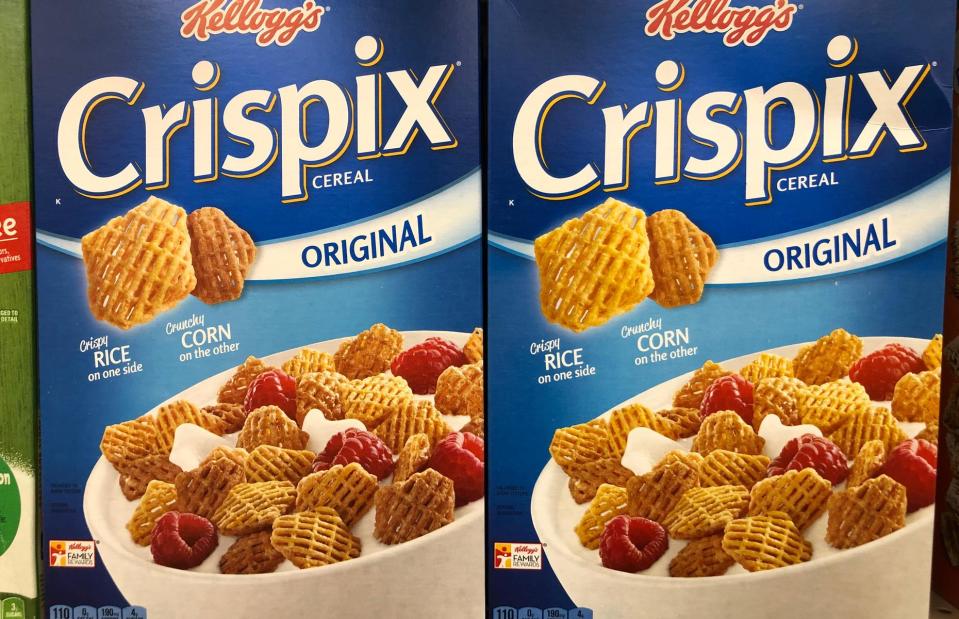
melissamn/Shutterstock
Made with rice, corn and sugar, this cereal has 0.2oz (5g – just over 1 tsp) of sugar per the suggested serving size of 1.4oz (40g). That's not too awful and it's fortified with plenty of iron – 60% of the US daily value – so not a bad choice if you tend to be low in this anaemia-protective mineral. There's virtually zero stomach-filling fibre, though, so hunger might strike sooner than expected.
25. Weetabix with Chocolate, UK
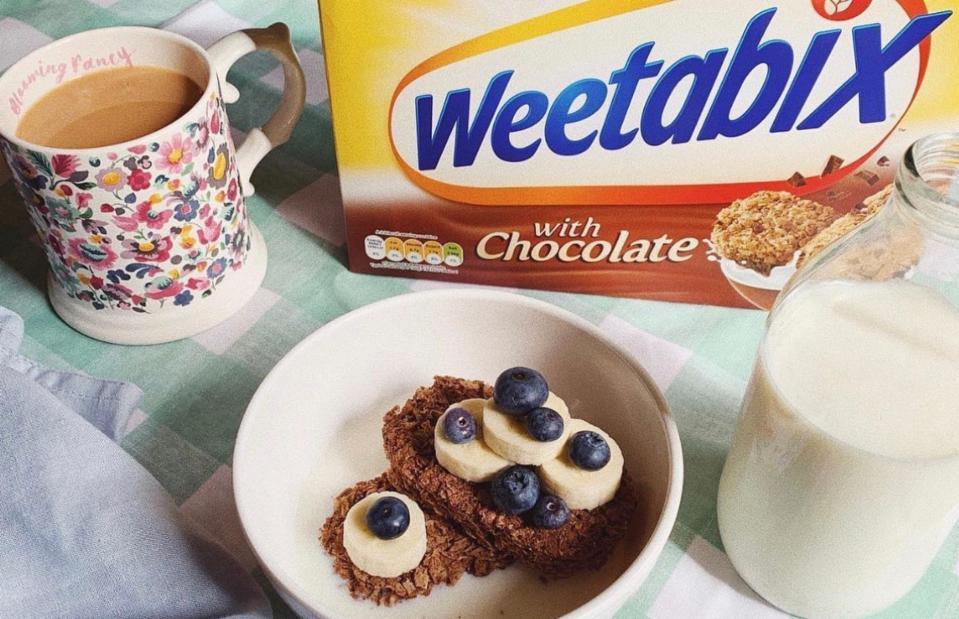
Weetabix/Instagram
Plain Weetabix is one of the UK’s best lower-sugar, high-fibre cereals. But choose Weetabix with Chocolate and that's no longer the case – the sugar content quadruples, meaning a serving of two biscuits (1.6oz/45g) has 0.3oz (8g) sugar, which is nearly 2 tsp. That said, the cereal is loaded with 100% whole grains and fibre, so it's not all bad.
24. Kellogg’s Frosted Mini-Wheats, various locations
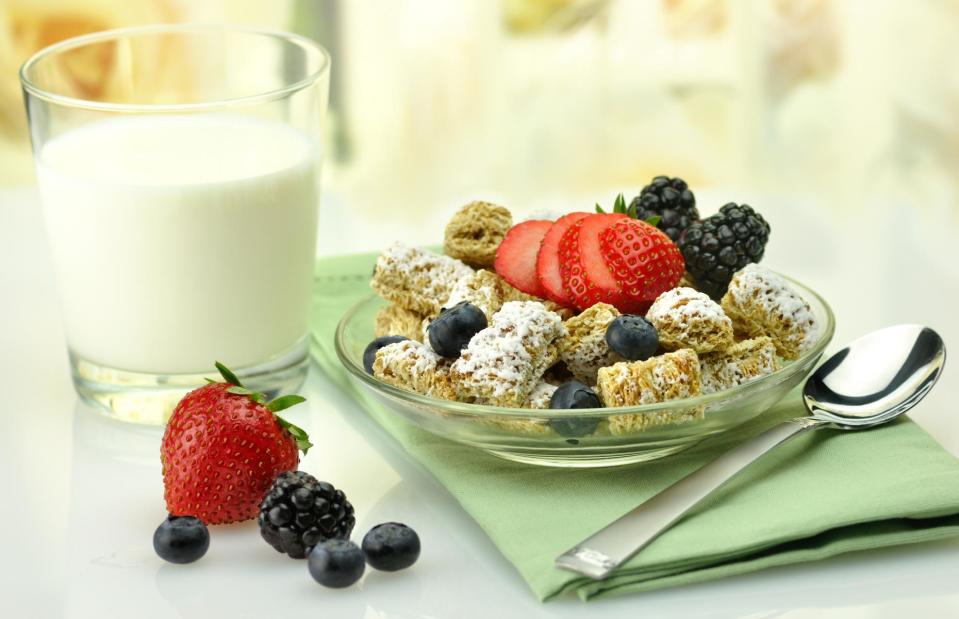
Svetlana Foote/Shutterstock
These mini parcels of shredded wheat (known as Frosted Wheats in the UK and Toppas in other European countries) have a sugar frosting and contain beef gelatine too, so aren’t suitable for vegetarians. A typical 1.4oz (40g) portion in the US boasts 0.3oz (8g – almost 2 tsp) of sugar, meaning each serving is around 20% sugar – thankfully it is loaded with 100% of the US recommended daily iron intake. Meanwhile, in the UK, a typical 1.4oz (40g) portion has 0.2oz (6.8g – about 1.75 tsp) of sugar and isn’t fortified with vitamins. It is a decent source of fibre, though, with 0.1oz (3.6g) per bowl – about an eighth of the recommended UK daily intake.
23. Weet-Bix Wild Berry Bites, Australia
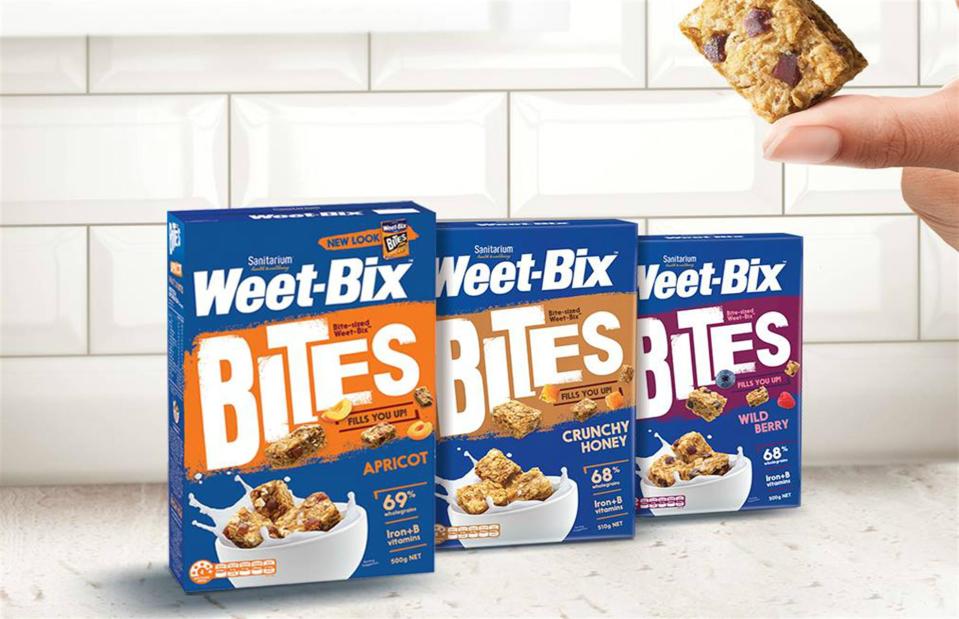
Weet-Bix/Facebook
On first glance, this cereal may look healthy; Weet-Bix is 68% whole wheat, has added B vitamins and iron, and is a good source of fibre. But the cereal could definitely do better on the sugar front – it’s made up of over one-fifth of the white stuff, featuring 0.4oz (11g) per 1.8oz (50g) bowl.
22. Honey Monster Wheat Puffs, UK
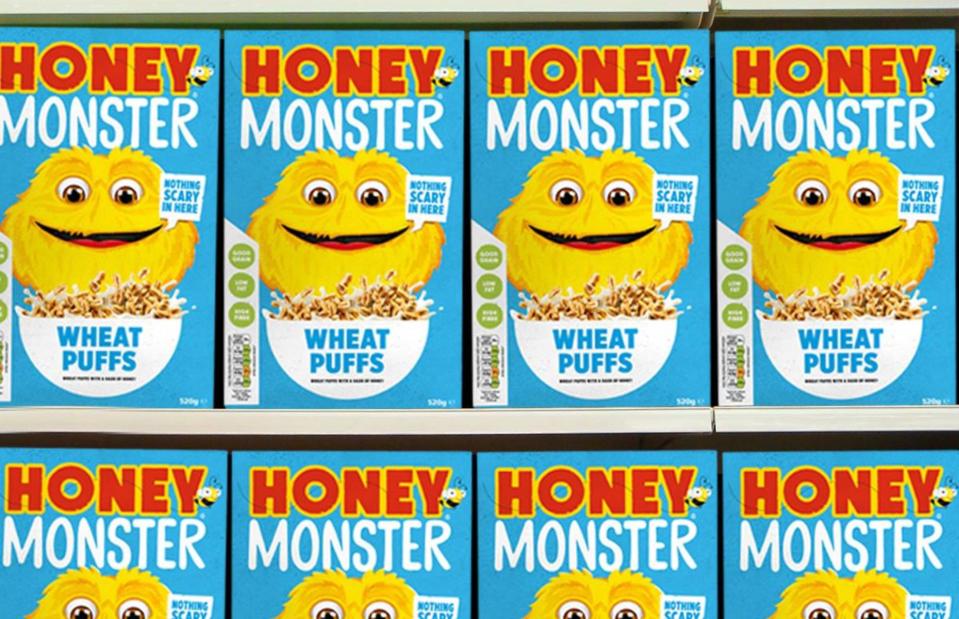
Honey Monster/Facebook
An old favourite, this cereal is made from puffed whole wheat kernels coated with honey and has been re-formulated to be less sugary than it used to be. A 1oz (30g) bowl contains 0.2oz (just over 5g) sugar. It's worth noting that this is over a quarter of the UK daily sugar recommendation for a child aged seven to 10-years-old, so still not ideal. But it does have added iron and vitamins, no added salt and almost a tenth of the daily recommendation of fibre.
21. Shreddies The Coco One, UK

ACORN 1/Alamy Stock Photo
The sugar content for chocolate-flavoured Shreddies may have decreased in recent years, but the cereal still boasts a hefty 0.3oz (around 8g) in a typical 1.4oz (40g) bowl. As an occasional treat for kids, though, you could do worse. Although Shreddies The Coco One is lower in fibre than the plain variety, a bowl is still a good source.
20. Nesquik chocolate cereal, various locations
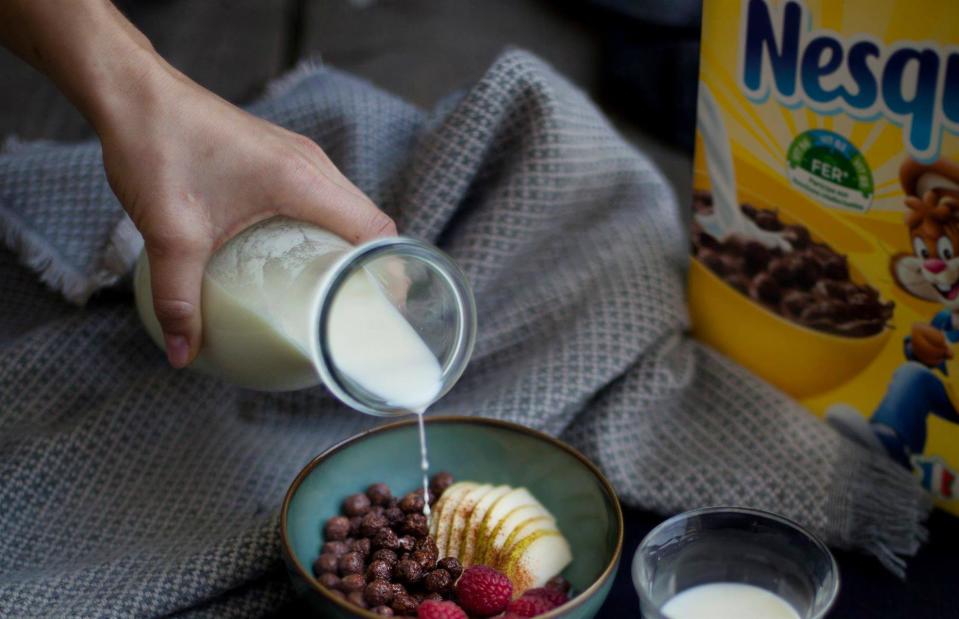
Nestle Cereals/Facebook
It's not too much of a surprise that chocolatey cereals are among some of the highest in sugar. A 1oz (30g) UK portion of Nesquik cereal contains 0.2oz (just over 5g) of sugar, which is more than a quarter of the maximum daily recommended amount for a child aged between seven and 10-years-old. It’s fortified with calcium, vitamin D, iron and B vitamins, so you do still get some goodness. In Canada, this cereal contains significantly more sugar.
19. Honey Cheerios, UK
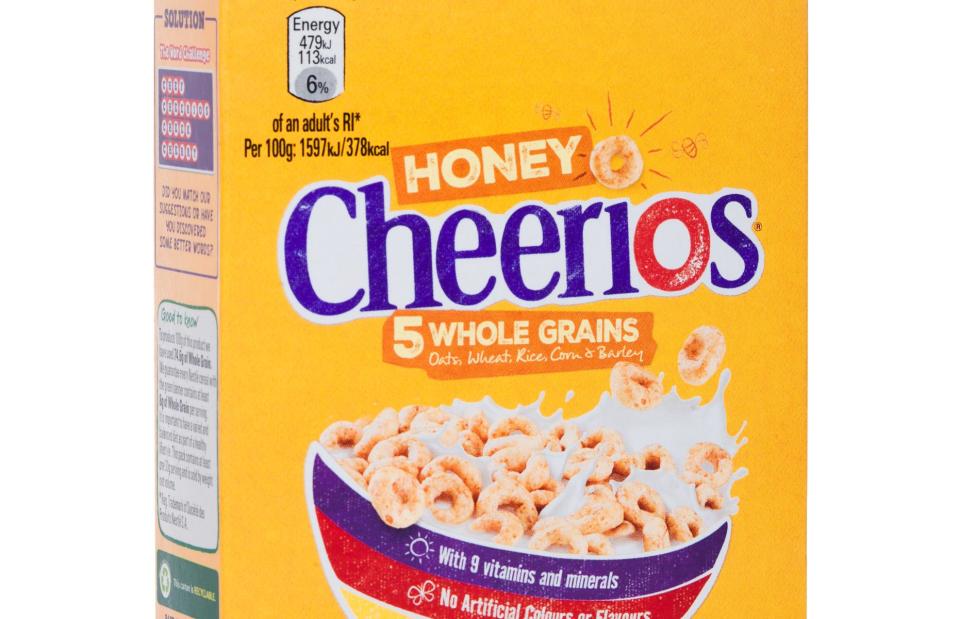
DenisMArt/Shutterstock
Whole grain Honey Cheerios contain 0.1oz (2.7g) fibre per bowl – similar to a slice of wholemeal bread – but with almost 0.2oz (just over 5g and nearly 2 tsp) sugar per 1oz (30g) bowl, it shouldn’t be a regular snack. A serving of Cheerios does have at least 15% of the daily recommendation of nine vitamins and minerals, so that is in its favour.
18. Kellogg's Just Right Original, various locations
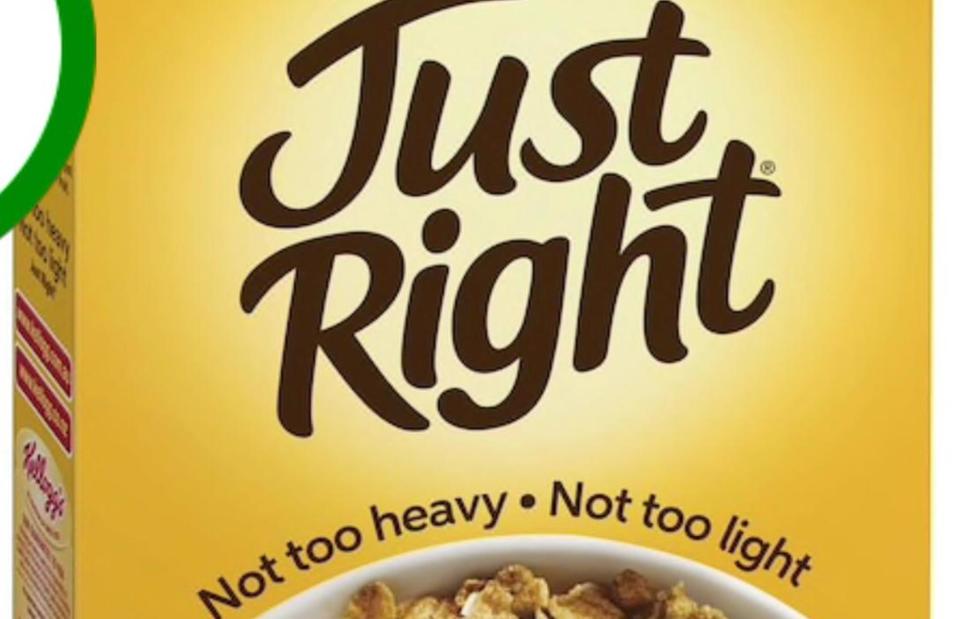
Kellogg's/Facebook
This health-focused cereal first landed on supermarket shelves in Australia in the 1980s, before branching out into other markets across the globe. With over 2 tsp sugar per 1.4oz (40g) serving, it's hard to see how this cereal rates four out of five on Australia’s Health Star rating scheme. One reason is that not all the sugar is added – some comes naturally from the dried fruit, which also provides fibre and nutrients. This is also a whole grain cereal, has no added salt and is vitamin and mineral-fortified
17. Nutri-Grain, Australia
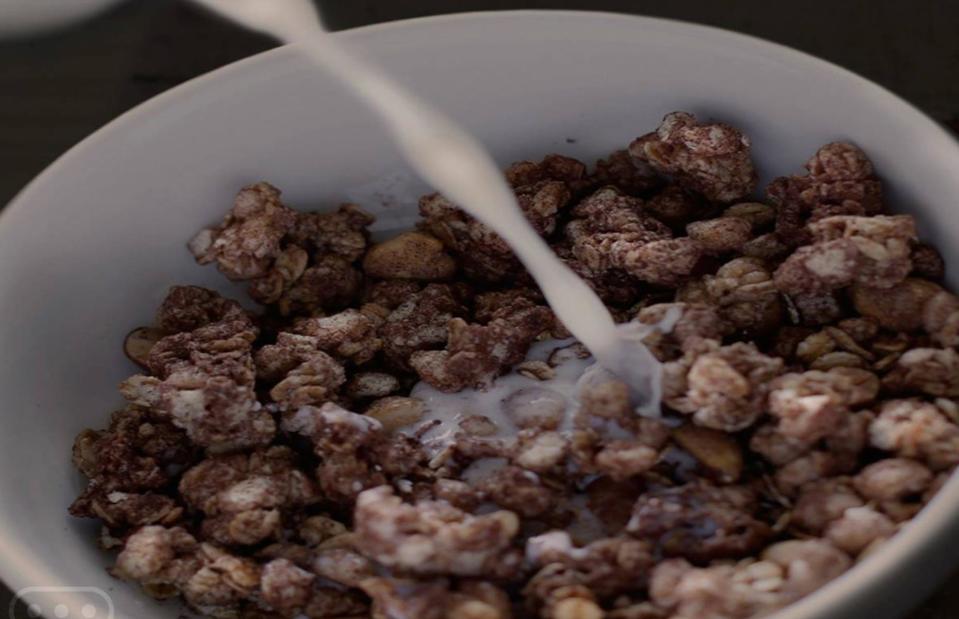
Nutri-Grain Australia/Facebook
Made with wheat, oats and maize, this cereal is a reasonable source of fibre and has added wheat protein, meaning you should feel fuller for longer. But it is 24% sugar, equating to 0.3oz (around 8.5g – nearly 2.5 tsp) per 1.4oz (40g) bowl. This is a fortified cereal, though, supplying B vitamins, calcium, iron and zinc.
16. Milo, Australia
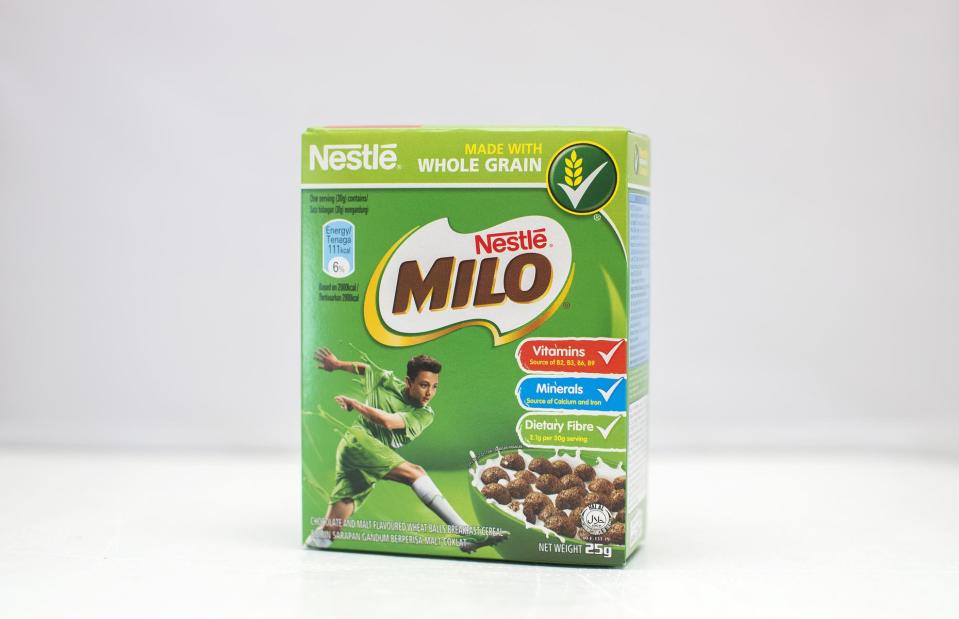
Ra'uf Hussin/Shutterstock
Milo cereal is made with more than 50% whole grains, so a serving of 1oz (30g) provides you with a similar amount of fibre to a slice of wholemeal bread. Sadly, the sugar content of this tasty cereal is quite high – it adds up to 0.3oz (around 8.5g) per bowl. Thankfully, it's fortified with 10 essential vitamins and minerals, including iron, calcium and B vitamins.
15. Trix, USA
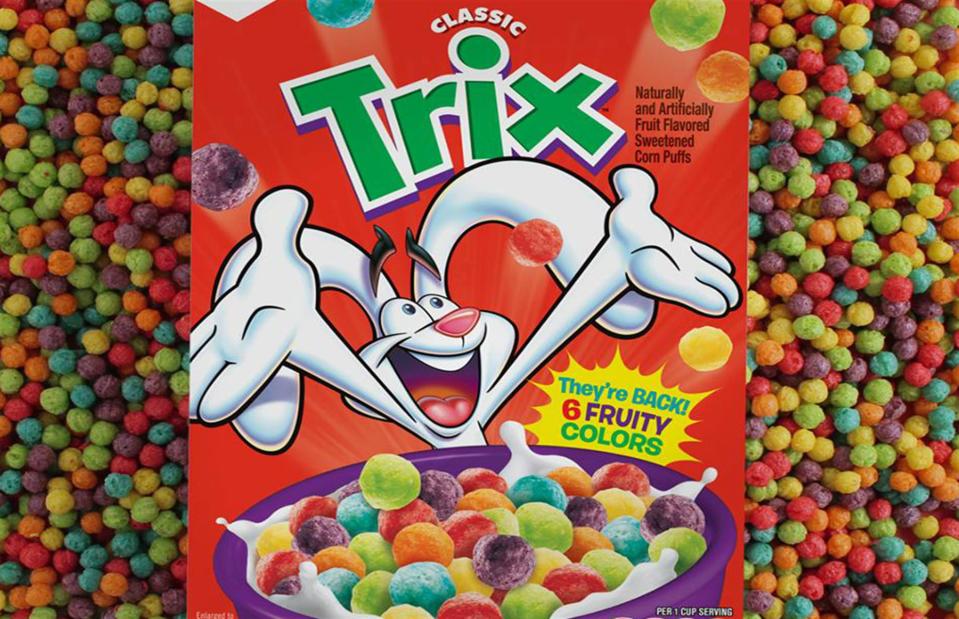
General Mills Cereal/Facebook
These bright corn puffs contain artificial colours that under British regulations would have to be labelled as a potential cause of hyperactivity in children. The cereal is not high in fibre, will only provide a short burst of energy and has 0.3oz (around 8.5g) added sugar per 1oz (30g) serving. In short, this definitely isn't one to eat every day, even though it does contain added vitamins.
14. Special K Red Berries, various locations
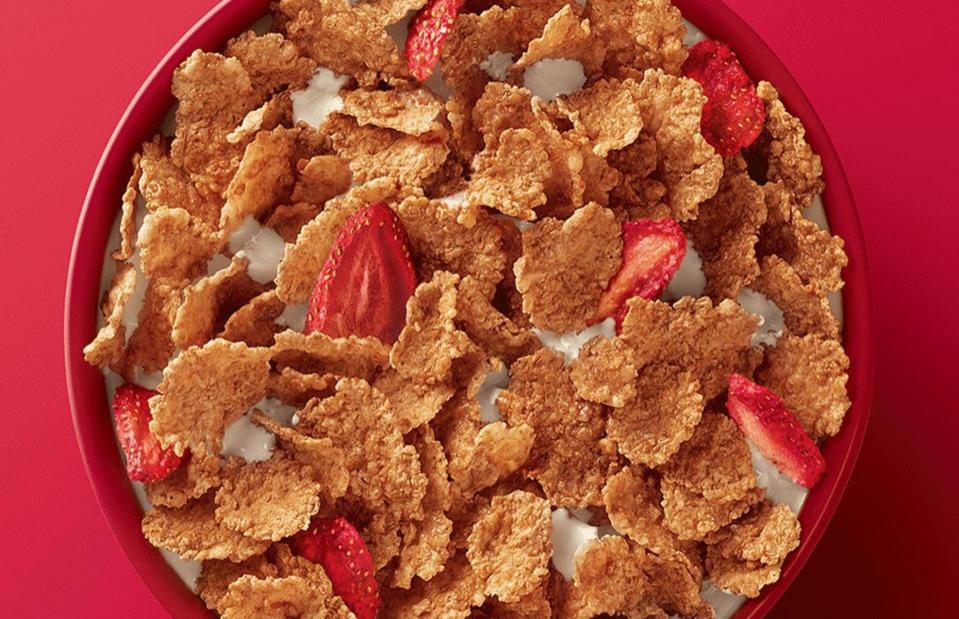
Special K/Instagram
Sugar is the main ingredient after whole grains and rice in this 'healthy' cereal, and brown sugar syrup appears in the ingredients list, too. In the US, a total of 2.5 tsp (0.4oz/11g) of added sugars are in each 1.4oz (40g) bowl; however, a serving supplies 60% of your daily iron and 50% of your daily folate needs. The same cereal in the UK is a lot less sweet, at 0.2oz (just over 5g) per 1oz (30g) serving.
13. Reese’s Puffs, various locations

General Mills Cereal/Facebook
Cereals with candy tie-ins are almost definitely going to be high in sugar, so it comes as little surprise that Reese’s Puffs contains 0.3oz (around 8.5g) sugar per 1oz (30g) serving. It's not a great source of fibre, but somewhat surprisingly, has a varied mix of vitamins and minerals added.
12. Cinnamon Toast Crunch, various locations

Michael Shugart/Alamy Stock Photo
Known as Curiously Cinnamon, Cini Minis and Croque-Cannelle in other markets, this autumn spice–flavoured cereal has been a hit with kids in the US since it launched in the 1980s. But like most kid-focused breakfast cereals, it’s not without its sugar consequences. In the US, a 1.4oz (40g) portion contains a staggering 0.4oz (11g) sugar. In the UK, it’s not quite as bad (but still not ideal) with a recommended serving of 1oz (30g) featuring 0.3oz (around 8.5g).
11. Froot Loops, various locations
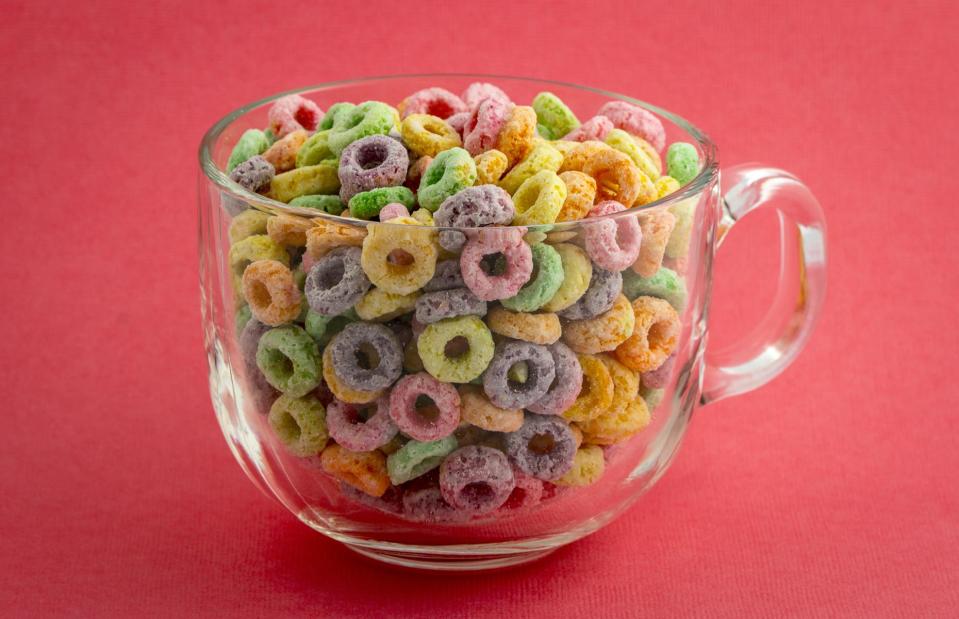
Nichola Potvin/ Shutterstock
This iconic, vitamin-fortified sugary kids' cereal contains close to one-third pure sugar and is laced with artificial colourants. A small plus: the whole grains in the US version means that along with the 0.4oz (11g) of sugar per 1.4oz (40g) serving, there's a couple of grams of fibre. In Australian Froot Loops, however, the colours are naturally sourced, but the sugar level is even higher, at 0.4oz (11g) per 1oz (30g) serving.
10. Honey Nut Cheerios, USA

Cheerios/Facebook
Made with oats and oat bran, a bowl of Honey Nut Cheerios (different from the UK's Honey Cheerios) provides a type of soluble oat fibre that can help lower cholesterol. It's also fortified with a wide range of vitamins and minerals, but the cereal is nearly a third sugar, with 3 tsp (0.4oz/11g) per 1.3oz (37g) serving.
9. Lucky Charms, USA and Canada

Lucky Charms/Facebook
They may look pretty, but a hefty one-third of this cereal is sugar and there is 0.4oz (11g – around 3 tsp) in the suggested 1.3oz (37g) serving. In addition, Lucky Charms are stacked with artificial flavours and colours and are devoid of fibre. The Canadian version is also rife with sugary components. Apart from the added vitamins, iron and zinc, it might as well be a bowl of candy.
8. Fruity Pebbles, USA and Canada
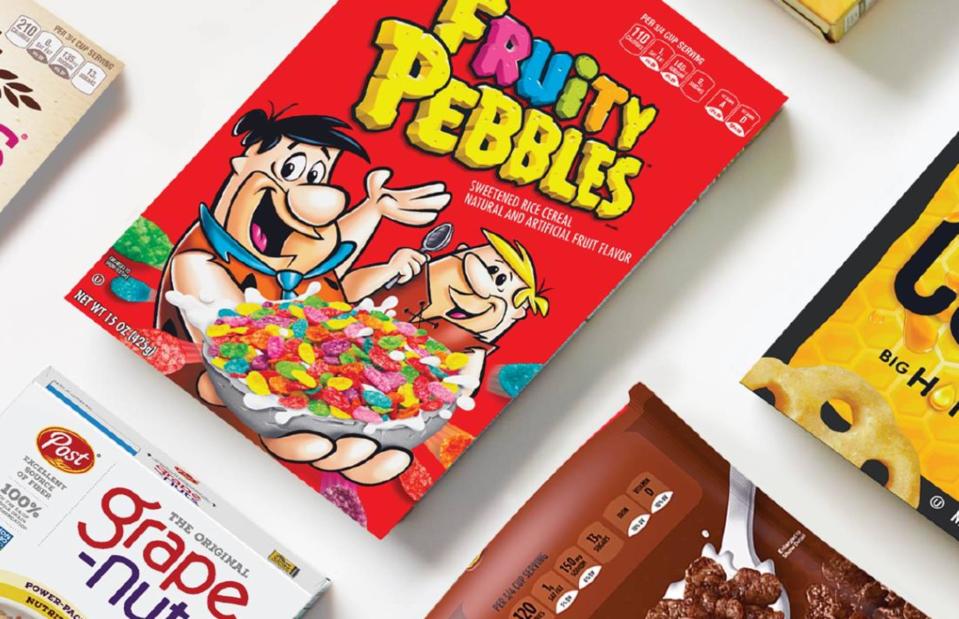
Post Cereals/Facebook
They may look pretty, but a hefty one-third of this cereal is sugar and there is 0.4oz (12g – around 3 tsp) in the suggested 1.3oz (37g) serving. Fruity Pebbles are also stacked with artificial flavours and colours, and devoid of fibre. The Canadian version is only slightly different, but still packed with sugary components. Apart from the added vitamins, iron and zinc, it's another cereal that's basically a bowl of candy.
7. Cookie Crisp, various locations

ACORN 1/Alamy Stock Photo
This vitamin and mineral-fortified crispy cereal includes whole wheat and maize, plus chocolate chips – not exactly the recipe for a healthy breakfast. In the US, a typical 1.3oz (37g) serving features a hefty 0.4oz (11g) sugar – that's a whopping one-third per bowl. In the UK, this sweet cereal's suggested serving size is smaller, coming in at 1oz (30g), meaning 0.2oz (just over 5g and nearly 2 tsp) of sugar, which is over a quarter of a seven to 10-year-old’s recommended intake (or just over a fifth of an adult's). But it could be worse – it provides around 30% of the daily recommended amount of calcium for adults, and that's before adding milk.
6. Crunchy Nut Cornflakes, UK
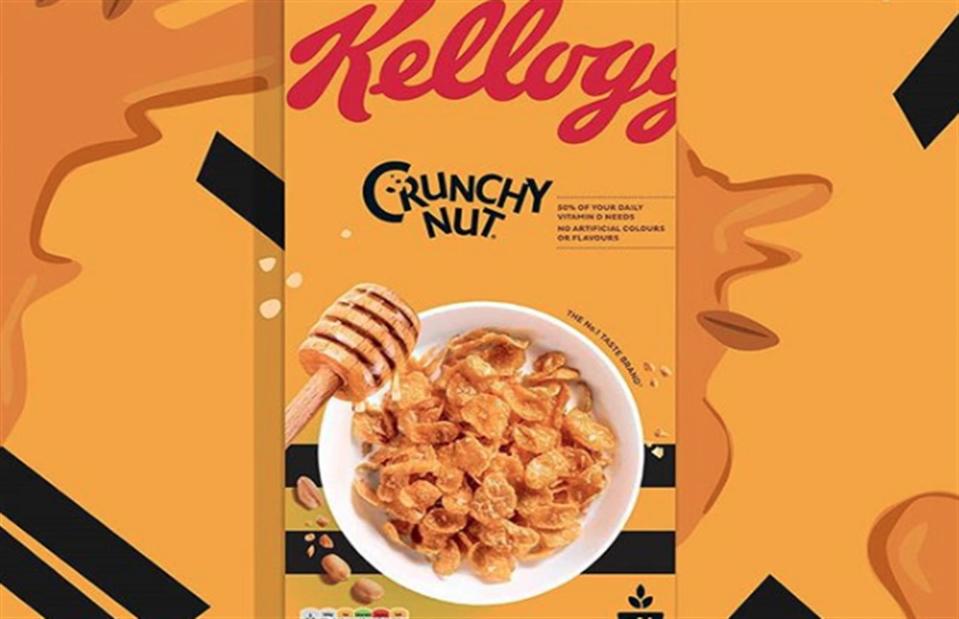
Kellogg’s/Instagram
These vitamin and iron-fortified flakes are made with maize and sugar, with just 6% peanuts and 1% honey. A relatively small 1oz (30g) bowl supplies a whopping 0.4oz (11g) of sugar, equating to just over 2.5 tsp. Plus, the energy from the cereal will be released into the body quickly, meaning blood sugar levels increase rapidly – while you’ll experience a short burst of energy after eating this cereal, this will be followed by a subsequent energy drop.
5. Frosted Flakes, various locations

Felix Choo/Alamy Stock Photo
One of the worst offenders when it comes to sugar-laden kids' cereals, Frosted Flakes (known as Frosties in the UK) are made from coated flakes of low-fibre maize. An average 1.3oz (37g) bowl of the US variety features a startling 0.5oz (14g) of sugar. Surprisingly, the UK variety is slightly higher in sugar than the US one, with 0.5oz (14g) per 1.2oz (35g) bowlful – this is more than half the daily recommended amount for kids aged between seven and 10. Apart from the added vitamins (the flakes are fortified) and the calcium that children will get from the milk poured over, this cereal has little going for it.
4. Krave Chocolate, various locations
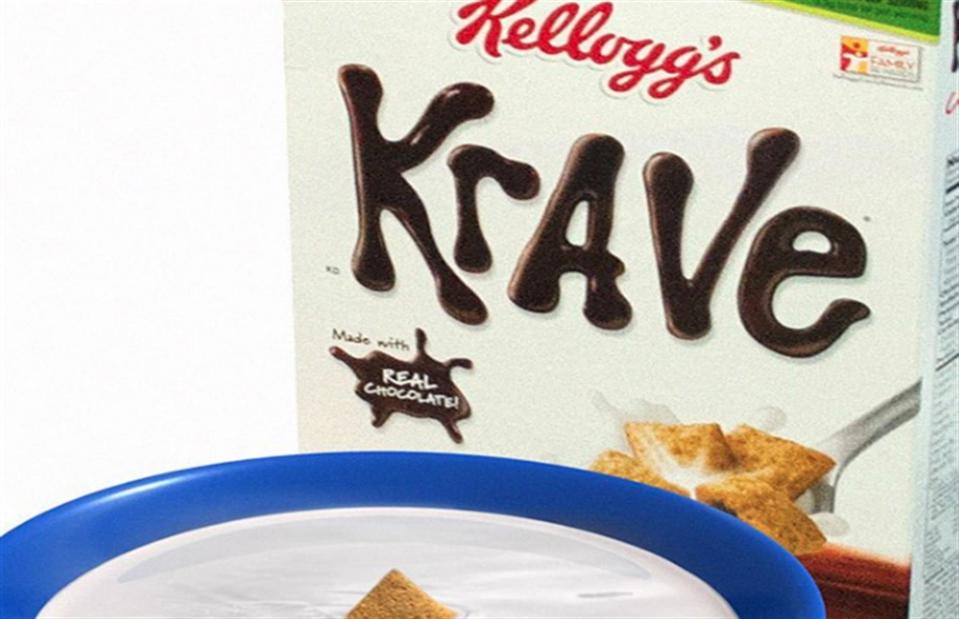
Kellogg’s/Instagram
In the US, these chocolate-filled cereal bites contain 0.5oz (14g) of sugar in the suggested 1.5oz (42g) serving size – that's more than a two-finger KitKat Original. It's not all bad, though; Krave does have some added vitamins and minerals, including iron and vitamin D. In the UK, Kellogg's Krave contains less sugar, but still provides a significant amount for a breakfast bowl.
3. Chips Ahoy Cereal, USA and Canada

Post Cereals/Facebook
Staggeringly, this cereal has a higher sugar concentration than actual Chips Ahoy cookies. In fact, a 1.3oz (38g) bowl supplies 0.5oz (14g – around 3.5 tsp) sugar, and barely any fibre. You do get a third of your daily iron intake from a serving, but it would be much healthier to get that iron from lean meat, leafy greens or nuts instead.
2. Cocoa Krispies, various locations

Steve Cukrov/Alamy Stock Photo
A favourite around the globe with both kids and many young-at-heart grown-ups, Cocoa Krispies (known as Coco Pops, Choco Krispis, Choco Krispies and Choco Pops depending on the market) are loaded with sugar. In the US, the brand features a whopping 0.5oz (14g) per 1.4oz (40g) serving. Kellogg’s in the UK has reduced the sugar count significantly; a 1oz (30g) serving has around 0.2oz (just over 5g) of added sugar. Like most kids' cereals, the UK version is fortified, providing 50% of the daily recommended intake of vitamin D.
1. Honey Smacks, USA
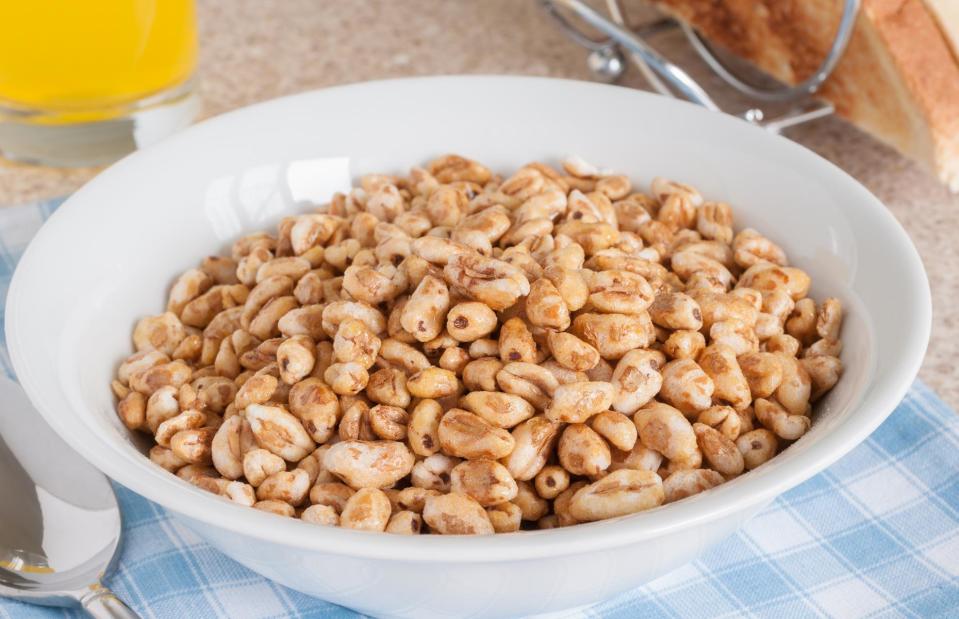
D. Pimborough/Shutterstock
Honey Smacks, quite appropriately known as Sugar Smacks when the cereal launched in 1953, may now have a healthier-sounding name, but still boasts a shockingly high sugar content. The crispy puffed rice contains 0.6oz (17g) sugar in its suggested 1.3oz (36g) bowl. You might want to keep your consumption of this cereal low, or avoid altogether.


